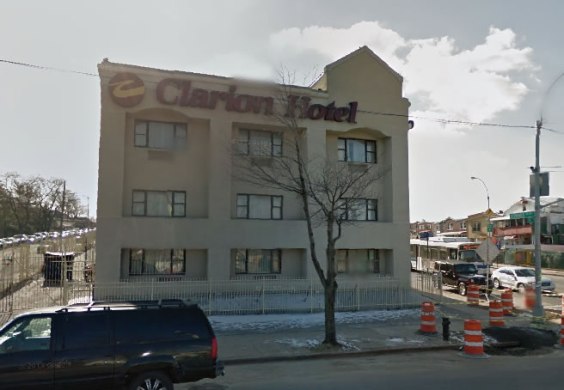
Aug. 24, 2015 By Jackie Strawbridge
Homeless families began moving into a new shelter at the former Clarion Hotel today.
The City’s newest shelter, which is located across from LaGuardia Airport at 94th Street and Ditmars Boulevard, serves families with children and has 169 units, according to the Department of Homeless Services.
The opening marks an about-face for the DHS, which told the Jackson Heights Post in June that the location was not in the pipeline for a shelter.
CAMBA, a Brooklyn-based provider, will operate the shelter.
The agency gave a quiet prelude to the Clarion shelter, notifying local elected officials and hosting a community meeting about a week in advance. DHS officials said the agency followed the notification process for emergency shelters, which have temporary contracts and an expedited procurement process.
Both the nearby Westway shelter and Elmhurst’s Pan Am shelters were opened through emergency contracts; both inspired outrage due to the lack of community notification involved in the process.
Since then, the DHS amended emergency shelter procurement to include one week of advance community notification. However, for some, the new facility merely represents old systemic issues.
“Here we go again,” said State Sen. Jose Peralta, calling emergency procedures “a cover for just bringing a homeless shelter into the community without any community input.”
“My constituents are very understanding of the necessity of the City’s obligation to house the homeless,” Peralta continued. “But, the fact that the City seeks input after the fact is nothing but a Bloomberg or Giuliani tactic of shoving a homeless shelter down a community’ s throat.”
A spokesperson for Councilwoman Julissa Ferreras said that she wants the City to channel more resources, especially for transportation, into the area as a result of this new shelter.
“The community is willing to absorb these families but not without some added support,” the spokesperson said.
According to the DHS, Queens hosts 9 percent of shelters City-wide.
“Eviction continues to be the main cause of homelessness in New York City, and we’re now seeing the summer uptick of homeless families entering our shelter system,” a DHS spokesperson said. “[The new shelter will] ensure we have the capacity to house those in need.”
